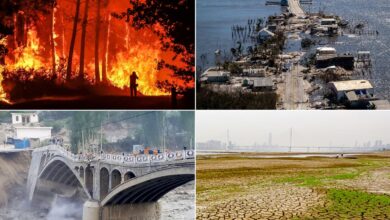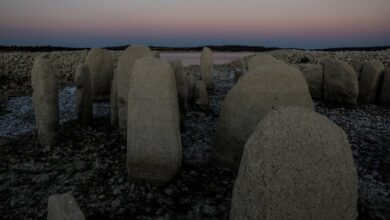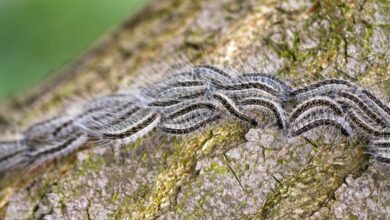How the climate crisis is forcing polar bears into deadly encounters with humans

The climate crisis isn’t only taking a devastating toll on humanity with a carousel of increasingly extreme events. It’s also greatly harming the planet’s biodiversity.
On Tuesday, reports emerged that a polar bear had killed a woman and a child in a small village in western Alaska. While it’s unclear if the attack was a direct result of the climate crisis, changing conditions have forced the bears into more — and sometimes fatal — encounters with humans.
“Initial reports indicate that a polar bear had entered the community and had chased multiple residents,” Alaska state troopers wrote in a dispatch report about the attack. “The bear fatally attacked an adult female and juvenile male.”
A local resident ultimately shot and killed the bear.
Arctic dwellers, the bears live in a region that is heating at four times the rate of the rest of the world, as reported by NASA scientist Peter Jacobs.
Rising ocean temperatures are melting sea ice and reducing their hunting grounds. Somewhere between 21,000-30,000 polar bears are now left in the wild, but estimating whether there is a decline in adult population numbers is tricky due to a lack of long-term data.
However, recent aerial counts of polar bear cubs between the ages of one and two-years-old have shown a dramatic decrease in bears reaching adulthood since the 1990s. Those cubs, called “yearlings”, used to account for 12 per cent of the polar bear population. Now, they only account for three percent.
News stories have focused on depressing images of emaciated polar bears stranded on ice flows and the increased – though still rare – numbers of aggressive encounters between the generally reclusive polar bears and humans. In August, a polar bear attacked three people when they stumbled on it feeding on a carcass near their cabin in Sanirajak, Nunavut, Canada. All three survived the attack but suffered serious injuries as a result, according to the CBC.
In another incident in August, helicopters were called in to scare off seven polar bears that were stalking a captive herd of reindeer in Siberia. The bears were reportedly acting aggressively towards the reindeer and their human keepers, likely because they were hungry. In 2014, children in the village of Arviat in the Canadian Arctic, congregated inside a community building in their Halloween costumes because a trio of polar bears were sniffing around outside looking for food.
Despite these reports, top polar bear researchers caution against focusing on these incidents. They note that it’s the conditions – not the bears – that have changed.
“I think it’s important to differentiate between a behavioral change, as we would commonly think of it, and think of it more in the framework of something the bears are forced into because their habitat is gone,” Dr Steven Amstrup, the chief scientist at Polar Bear International (PBI), told The Independent.
Dr Amstrup has been researching polar bears for the non-profit since 2010. Before joining PBI, he spent 30 years at the US Geological Survey working in Alaska’s Beaufort Sea researching the bears, and has served as a chair on the International Union for the Conservation of Nature’s Polar Bear Specialist Group.
He said that climate change-driven sea ice melt is the predominant threat to the global polar bear population. According to NOAA’s 2021 Arctic report card, the region experienced its warmest autumn since records began in 1900. Post-winter sea ice levels were at their lowest since NOAA began keeping track a decade ago. These changes are devastating polar bear hunting grounds.
Polar bears predominantly eat two species of Arctic seals – bearded and ring. The seals use snow that falls on the sea ice to build dens for when they give birth. When seal pups venture onto the ice, they, and the adults, make up most of polar bears’ caloric intake.
Less sea ice, and there’s fewer places for seals to build birthing dens. In turn, there are fewer opportunities for polar bears to feed. Ice is also freezing later in the year than in the past, meaning that the snow dissolves in ocean water rather than accumulating.
With fewer seals to feed on, polar bears have been forced to expand their hunting grounds and find new sources of food. Reports from The Royal Society Open Science journal found that polar bears are more frequently visiting the nesting locations of birds, like eider, and eating them and their eggs.
This change in polar bears’ hunting methods not only threatens these species of Arctic ground bear, but provides insufficient caloric replacement.
Seals are like “fat pills” for the bears, according to Dr Amstrup. Feeding on birds and eggs cannot fully replace the energy needed for polar bears to survive and procreate.
While some reports out of Russia have suggested that polar bears are turning to cannibalism, Dr Amstrup said those incidents are rare, noting that all kinds of bears kill other bears. It usually happens among adult males and cubs to free up nursing females for breeding.





